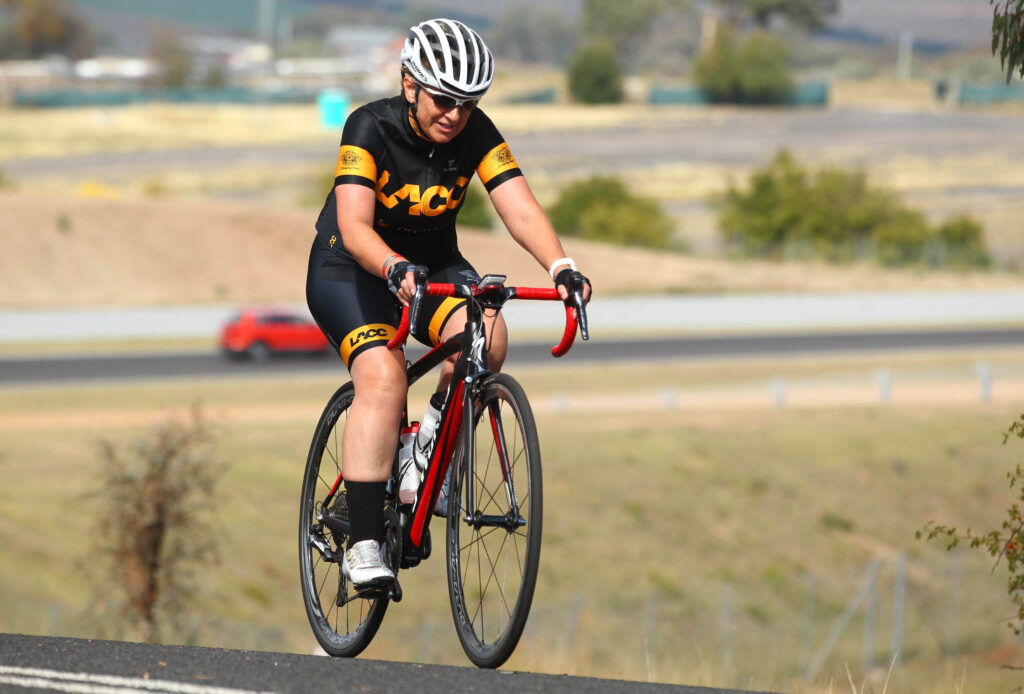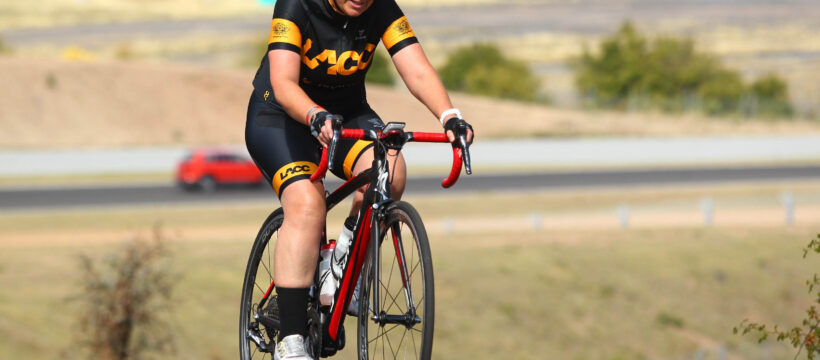A woman’s guide to riding up steep hills on a road bike
Okay…confession time – I really don’t like riding up hills, particularly riding up steep hills on a road bike but the reality is, that they exist and I need to learn how to ride them. So I’ve done a little research and put together a few tips that will help both you and me learn to handle them a little better.

Fit the right gearing to your bike
If steep climbs are on your agenda, just remember that even top climbing professional riders have compact chain rings and wide-ranging rear cassettes, so you are not wimping out by doing the same. I’ve often heard other riders, particularly men, acting tough with harder gears but why expend unnecessary energy when you can spin in relative comfort. Read my previous blog post about gearing for more information on the subject.
Pace yourself
You need to try to pace your effort. Hold back near the bottom, select a low gear early and try to build your effort through the climb to peak when you reach the crest. Take advantage of any flatter sections to catch your breath, even a couple of metres of respite can make all the difference.
Body position and technique
If you’ve got low enough gearing to allow you to stay seated, bend your elbows to drop your chest towards your handlebars. This will prevent your front wheel from unweighting, while still keeping weight on your back wheel for traction.
Eventually though, a real brute of a climb is likely to force you out of the saddle but make sure you don’t shift your weight too far forwards or your rear wheel may spin out. Keep your weight back, hovering over the saddle. Keeping your pedal stroke smooth will also help maintain traction.
Leave a gap and ride at your own pace
As you reach the bottom of the climb, back off slightly and allow a bit of a gap to the rider in front. This will allow you a better view of the road ahead. And don’t chase others up a steep hill. Instead maintain your own comfortable pace.
Maintain your momentum
Do everything you can to carry momentum into a steep climb. If you’re riding an unfamiliar route conduct some research before so you are prepared for any climbs. You don’t want to turn a blind corner in your big chainring and suddenly be confronted by a steep hill.
Work on good cornering technique to hold speed into a climb and make sure you shift down early in anticipation but not so early that your legs spin out.
Use all of the road
If it is safe and doesn’t obstruct or endanger yourself or other road users, you can use the road to flatten climbs. Tight bends and hairpins are always less steep if you ride a wide line and, on straight sections, zig-zagging from side to side can really help if the road gets really steep.
Lighten the load
As the gradient increases, so does the detrimental effect of excess weight on your bike and body. Shaving grams off the bike can be an expensive exercise but simple measures, such as emptying your water bottles before an especially steep climb or avoiding carrying unnecessary kit, can help.
Conserve energy
If you know there’s a climb coming up, recover as much as possible in the kilometres before it. Use good group riding skills to avoid expending unnecessary energy, and drink and spin your legs fast in a low gear to loosen them off ready for the big effort to come.
Play mind games
This is the most important tip of all so I’ve left if for lucky last.
Stay positive, don’t think about past failures, keep your head up, breathe in a controlled and rhythmic manner and, for as long as possible, keep relaxed. I use positive affirmations before I reach a steep hill like “You will climb XXX hill”. If I’m alone I actually say it out loud. It might sound silly but it seems to work for me.
Set targets on the climb, such as trees or lampposts and give yourself a little pat on the back each time you pass one.

